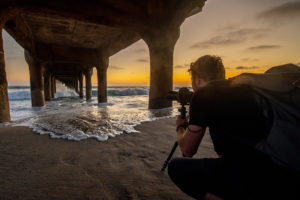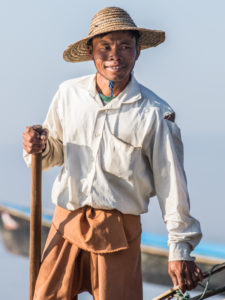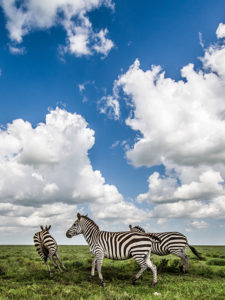Tanzania Safari Packing List
Struggling to figure out what you need to bring for your upcoming Tanzania Safari? No stress, packing for safari is easy. The lighter you travel the happier you’ll be. Our Tanzania Safari Packing List will help guide you so you’re prepared for the adventure ahead!
Truth be told, you really don’t need a ton of stuff for a Tanzania Photo Safari. This is true no matter how many days you plan on going for. Whether it’s a 5 day or a 10 day, laundry is available virtually everywhere and is fast and convenient. You may spend a few bucks but you’ll save time and energy and you won’t have to lug around a bunch of stuff and potentially avoid any excessive baggage fees.
What you can expect
We’ll be spending a lot of time driving as it’s the only way to get up and close with the wildlife. The custom Toyota Land Cruisers you’ll be riding in are designed to handle serious off road conditions while chasing the wildlife out in the bush. They’re extremely capable but they lack space for luggage. Since the vehicles are customized to make the passengers comfortable, the cargo capacity gets reduced. Bottom line here:
You have to pack light.
For those of you climbing Mount Kilimanjaro immediately after our 10 day safari, please refer to the Kilimanjaro Gear and Packing Guide on how to approach your climbing gear.
No hard sided luggage
We’ll be at capacity in each Land Cruiser so it’s important each guest brings ONE soft sided backpack or duffle bag as your main bag.
No hard sided luggage will be permitted.
*If you are traveling from another country other than your domicile country please contact us so we can make the appropriate arrangements.
We prefer to travel with only carryon luggage and as a result, we recommend the following bag from Osprey:
Osprey Farpoint 40 Liter Travel Backpack
Adored by travelers around the globe, this 40 liter pack is perfect as your main bag for your safari. It’s small enough to carry on the plane and you won’t have to deal with lost luggage, or waiting for it upon arrival. For most of us, Tanzania isn’t easy to get to. We highly encourage you to travel with just a carry-on and avoid any potential luggage hassles.
If you feel that’s too small of an option and you don’t mind checking a bag, we recommend a waterproof and durable soft sided bag like this one from Leader:
70 Liter Deluxe Waterproof PVC Duffel Bag Backpack Dry Bag
The bag comes in a 40, 70, or 90 liter options. It comes in cool colors and is waterproof which is a huge bonus. For $50USD it’s a pretty good deal. One of these and a laptop or computer bag and you’ll be more than ready for our time in Tanzania. Obviously the larger size won’t allow you to use as a carry-on but it’ll work very well for your time in Tanzania. It wear as either a backpack or a duffle which is convenient.
TSA Travel Locks
It’s a good idea to keep your bags locked up. It’s a simple solution to deter potential prying eyes and fingers. If someone really wants your stuff they’ll find a way to take it but these little locks can shut down an opportunist quickly. Better safe than sorry. Combination locks are preferable over key locks always. Make sure you keep your combo in the cloud (Google Docs, Evernote, etc.) in case you forget it.
2 Pack TSA Approved Luggage and Backpack Lock
Travel Documents
Make sure you have your passport, airline tickets, phone, journal, etc. secure and in one place. We recommend keeping your cash, and aforementioned items in a small dry bag to keep safe and protected from the elements. We recommend keeping this dry bag with you at all times.
Visa Information
Please check the Tanzania Immigration Website for Visa Entry/Fee requirements. For US Citizens, the fee is $100 and you must pay using a recent (2006 or newer) crisp, clean, non damaged/heavily creased/faded bill. Best to get from your bank before your scheduled flight.
Please note that your travel to and from Kilimanjaro International Airport (JRO) and your visa matters are your responsibility.
Please make sure you have enough space in your passport, enough time left on your passport, and that you adhere to their entry requirements outlined on their website. If you have questions, please contact your local embassy for guidance. You can also refer to the US DOS Bureau of Consular Affairs for more information.
Yellow Fever
From the US Embassy website to Tanzania, “Yellow fever vaccination is required for all travelers from yellow fever endemic countries/regions. All individuals in transit for twelve (12) hours or more and/or who leave the immediate airport vicinity in a yellow fever endemic area are required to show proof of vaccination upon arrival in any port of debarkations here in Tanzania. Direct arrivals from non-endemic countries in Europe and North America are not required to show the certificate.”
Please make sure if this applies to you, that you get the appropriate immunization and maintain record so they let you into the country upon arrival.
Money Matters
USD is accepted everywhere except local markets. Everywhere we will go while on safari USD will be the standard (lodges and tent camp). If you want local currency for your down time while in Arusha, it’s best to use an ATM that accepts your card for a secure and ‘fair’ transaction. You can always exchange a small amount at the airport upon arrival as well just make sure to exchange small denominations. You won’t need a ton of cash on your trip.
The currency used in Tanzania is the Tanzania Shilling. The current exchange rate as of the publish date of this article is:
$1USD = $2,225TZS
Carrying $100USD equivalent requires an armored truck. 😀 It’s fine for small transactions but we recommend not exchanging a bunch of money. You simply won’t need it.
NOTE: The only thing you’ll need cash for on your safari is alcohol, gratuities, and souvenirs. USD will be fine for all three.
Gratuities
Gratuities for your safari guide are covered in your trip cost. That said, if you feel compelled to tip our guides over and above due to the exemplary service you will receive, by all means please do so. Africa generally speaking is big on tipping and even a small tip is greatly appreciated.
Generally speaking, it’s good practice (in countries where tipping is part of the culture) to leave tips for the following situations:
- Housekeeping
- Room Service
- Transportation
- Hotel Bellman
- Meal Service
- Drink Service
- Exemplary Service
It’s a good idea to keep $100USD in small denominations for tipping while on your safari. On a 10 day safari, this breaks down to $10USD per day and will go a long way. Please note this is just a recommendation and you are by no means required to tip anyone. Please do so at your own discretion.
Clothing
Since we’ll be sitting in vehicles for long periods of time and relaxing around camp, eating, or sleeping the rest of the time, it’s absolutely okay if you wear your outer layers a few days before washing. As mentioned previously, you have access to laundry service at most of our lodges in case you need to get stuff clean.
Weather is typically moderate during February with light rain and cooler temperatures. On average you can expect temperatures ranging from high’s in the 80F – 90F (26C – 32C) to lows in the 50F – 60F (10C – 15C). Typically, the higher in elevation we go the cooler it gets barring a temperature inversion layer. In the case of Ngorongoro Crater we’ll be at a higher altitude (7,500ft or 2,286m) so evening and mornings are typically a bit chilly. This is true even at lower elevations as well. Bring a few laters and you’ll be happy and comfy.
Since packing is a personal choice we’ll cover items you should bring and let you decide on the quantity you feel comfortable with. We do encourage you however to pack light. We’re covering a lot of ground on safari and you will too just getting to Africa. Outer layers can be worn a few days before needing a wash whereas your under layers should be fresh each day for hygiene purposes and as a courtesy to your fellow Land Cruiser mates. 😀
Outerwear
Soft Shell Jacket (Men)Soft Shell Jacket (Women)orPuffer Jacket (Men)Puffer Jacket (Women)andLightweight Waterproof/Rain Jacket (Men)Lightweight Waterproof/Rain Jacket (Women)Quick Dry Shorts (Men)Quick Dry Shorts (Women)Bathing Suit (Lodge Pools)Nylon/Synthetic Pants (Men)Nylon/Synthetic Pants (Women)Quick Dry Tee Shirt (Men)Quick Dry Tee Shirt (Women)Shemagh (keffiyeh) or Sports BandanaHatBeanieSunglasses
Underwear
Synthetic Quick Dry Underwear (Men)Synthetic Quick Dry Underwear (Women)Synthetic Socks (Men)Synthetic Socks (Women)
Footwear
Athletic ShoesorHiking Boots (Men)Hiking Boots (Women)andSandals
Toiletries
Travel Size DeodorantTravel Size ToothpasteTravel Size ToothbrushDental FlossContacts or Eyeglasses (and backups!)Travel Size LotionTravel Size Hand SanitizerSmall Travel TowelChapstickSunscreenBug SprayFeminine Hygiene
NOTE: With the exception of our first night in Arusha, the remaining 9 days we’ll be in the bush (aka the wilderness). There are bugs in the bush. We highly recommend leaving the heavy scented lotions, cologne’s, and fragrances at home. It attracts insects. Instead, you’ll want to apply bug spray regularly and as such, your preferred fragrance should be a bug spray you can tolerate for the 10 days.
Electronics
You’ll be happy to have you Kindle, iPad, or laptop with you. It’ll allow you to watch movies, catch up on emails, and generally stay connected while you’re away. We encourage you to bring your favorite gear, however please keep it to a minimum. The exception here is if you plan on bringing a ton of photography gear. We won’t cover that in this article however as a general rule, pack light.
NOTE: You’ll need a type D or G travel adapter to charge/use your electronics in Tanzania. For more information or a visual reference please check this link. This travel adapter will work well and includes a USB hub:
Photography Gear
While our February 2017 safari isn’t specifically aimed at photographers, we do encourage you to bring your gear. You’re traveling with an internationally published professional photographer who’s photographed and worked with some of the biggest brands and celebrities in the world. Take advantage.
We’re working on a separate blog post dedicated to just photography gear but if you have any questions in the meantime, by all means please reach out. We’ll update this article as soon as the Photography Gear article is live.
If you have any questions about our Tanzania Safari Packing List, please drop us a line or comment on this post and we’ll respond asap.
Asante Sana!



